Pili Nut
Pili nut is a slender oily nut, with a crunchy and mild flavor. They belong to the Burseraceae family. Pili nut is one amongst the 600 other species of this family.
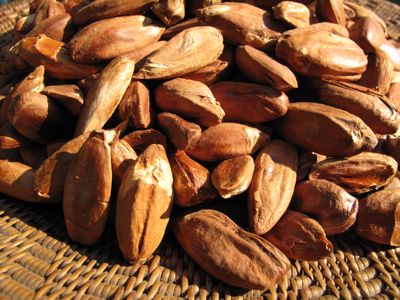
Pili Nut
Table Of Content
Pili Nut Scientific Name
The scientific name for Pili Nut is Canarium Ovatum. Its name ‘Canarium’ is derived from a local name ‘kenari’ in Molucca isles of Indonesia.
Pili Nut Description
Pili is an evergreen deciduous tree that stands 20m tall. They have odd pinnate leaflets with compound leave. They flower frequently however the fruit ripens after a couple of years. The flowers are at the foliage axils of a young shoot. The arrangement of flowers on a female tree is approximately 7 cm long with 6 to 7 greenish yellow flowers and on a male tree of about 10cm long with almost 18 flowers. The ripe fruit has a thick black skin. The nut is enclosed in a hard shell that is enclosed in a greenish pulp. The slender nut has a length of about 2 to 2.5 inches and a diameter of about 3 to 4 inches.
Pili Nut Range
Pili nuts are native to the Philippines. They are grown in parts of Malaysia and Indonesia too but only Philippines produce them commercially. In Philippines, they are grown in the Bicol region at the rainforest of Mt. Bulusan. There are other parts of the Bicol region where it is grown, such as Camarines Sur, Camarines Norte, Albay, Catanduanes, Masbate and Sorsogon.
Pili Nut Origin
Cultivation of Pili nut started from the tropical rainforest of Philippines. The ancient people of Philippines gathered the nuts which were growing wild in the forest and boiled them to make it edible. Gradually the native people started growing them domestically for food.
Pili Nut Growing
Pili is a tropical tree that requires a well drained, deep and a fertile soil. Warm temperature and a well distributed rainfall is the ideal weather condition for the tree to grow well. They cannot withstand frosty weather condition or even low temperature. The seeds germinate after 40 to 50 days. The old seedlings can be used as stock for plant propagation.
Pili Nut Harvesting
Harvesting of the nut is done from May to October; June to August is the peak season. The nut is de-pulped from the fruit, cleaned and dried. The moisture level should be 3 to 5 % during de-pulping. The nut enclosed in the hard shell can be stored for at least a year at a moisture level of 2.5 to 4.6 %.
Pili Nut Cultivators
The only pili nut cultivator in Hawaii is ‘Poamoho’. ‘Mayon’, ‘Oas’ and ‘Katutubo’ are the three cultivators in Philippines.
Pili Nut Uses
Edible Uses:
- Pili nut kurnel has a mild crunchy, nutty flavor when roasted. The taste resembles that of a roasted pumpkin seed and some even consider its flavor superior to that of an almond. They can be roasted, boiled or even grounded into a powder. They can be used in making cakes, chocolates and ice creams.
- Edible oil is extracted from the nut. This light yellow colored oil is often considered a substitute for olive oil.
- The fruit pulp and the young shoots of the plant are used t make pickles, flour, sauce or a puree.
- The shoots are also used to make salads.
- The fruits pulp can be eaten with seasoning or simply boiled which tastes like sweet potato.
Industrial Uses
- The oil extracted from the pulp can be used as a substitute for cotton seed oil in manufacturing soap and other products in industries.
- The oil is used for pharmaceuticals and cosmetic industries
Other Uses
- The shell is often used as a fuel.
- The shell is also used as manure for growing orchids and anthuriums.
- The shell s also used for manufacturing fashion accessories.
- The wood is used to make furniture.
Pili Nut Nutritional Value
Nutritionally, the pili nut is rich in
- Calcium
- Phosphorous
- Potassium
- Fats and protein
- Glycerides of Oleic and Palmitic acids
Pili Nut Recipe
There are several delicacies which can be made, using pili nut.
- Pili chocolate crunch
- Polvoron
- Pili tart
- Pili butter spread
- Crispy pili
- Spice greaseless pili
- Pili kisses
- Pili empanaditas
- Pandecillos
- Sugar coated pili
- Pastillas de pilli
- Pili candy
- Pili bar
- Pili cake
- Pili brittle
Pili Nut Health Benefits
There are several benefits provided by the organically processed pili nuts. They are as follows:
- Pili nut contains Omegas which has an important role in the functioning of brain. They are essential for maintain a healthy heart and also prevents cardiovascular diseases.
- Regulates blood sugar level as the nut contains the eight essential amino acids.
- The amino acids also help in the producing hormones, development of muscle tissues and regulate energy in the body.
- It helps in maintaining health skin and bones and detoxifies liver.
- Pili nut has the highest magnesium content than any other nut. Magnesium maintains healthy bones, skin and nerves.
- Pili nut is rich in Vitamin E which is essential in promoting strong immune system, maintains the cholesterol level and heart diseases.
Pili Nut Future Prospect
Cultivation of pili nuts are done commercially only in Philippines. Few areas in the Bicol region produce pili nuts hence there is a vast potential yet to be harnessed. Difficulty in the propagation in the production of pili nut is the major concern that needs to be adhered to. It has high export potential in the foreign market. The demand for pili nut for its edible uses and also by the spa industry has led to high demand; however, the supply of the nut is low comparatively. Therefore an organized pili grower and processor should be tapped to produce and supply fresh pili nuts.
Pili Nut Pictures
Here are some of the pictures of Pili Nut.
References:
http://en.wikipedia.org/wiki/Pili_nut
https://www.verywellfit.com/pili-nuts-nutrition-facts-and-health-benefits-4784039
http://www.agribusinessweek.com/philippines-investment-opportunity-the-pili-nut/
http://www.hort.purdue.edu/newcrop/cropfactsheets/pilinut.html
https://www.britannica.com/science/pili-nut
http://www.pinoybisnes.com/agri-business/pili-nuts-and-its-uses/
- by Bebaychna Rai
- November 24th 2011

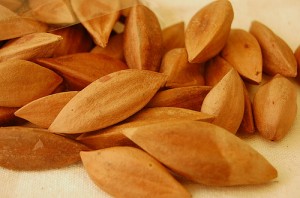
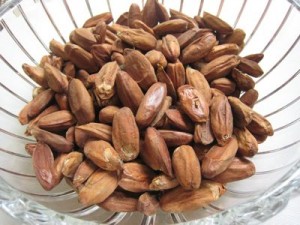
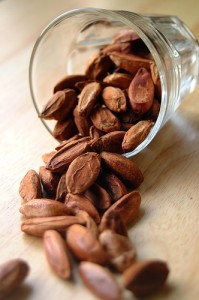
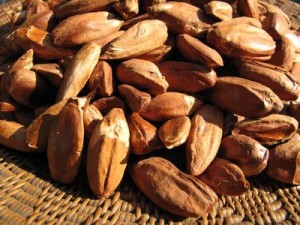
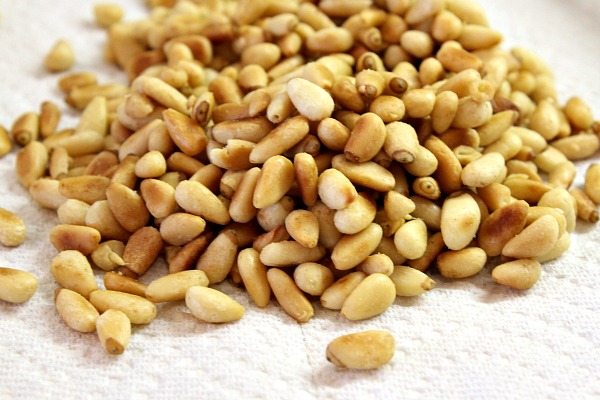

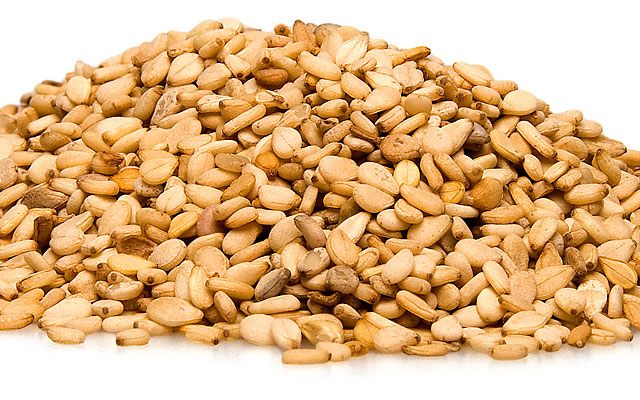
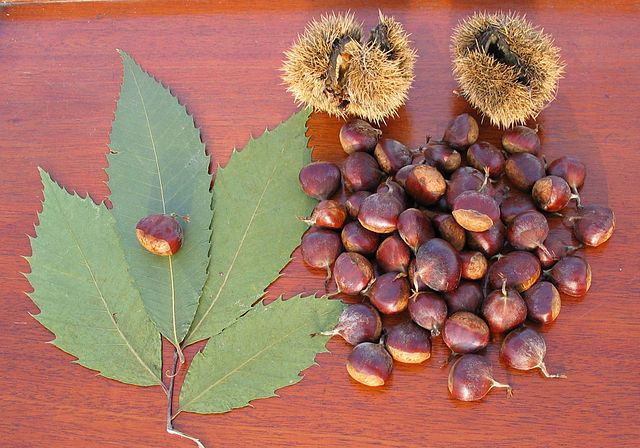















Leave a Reply